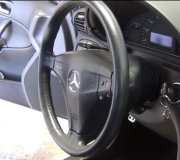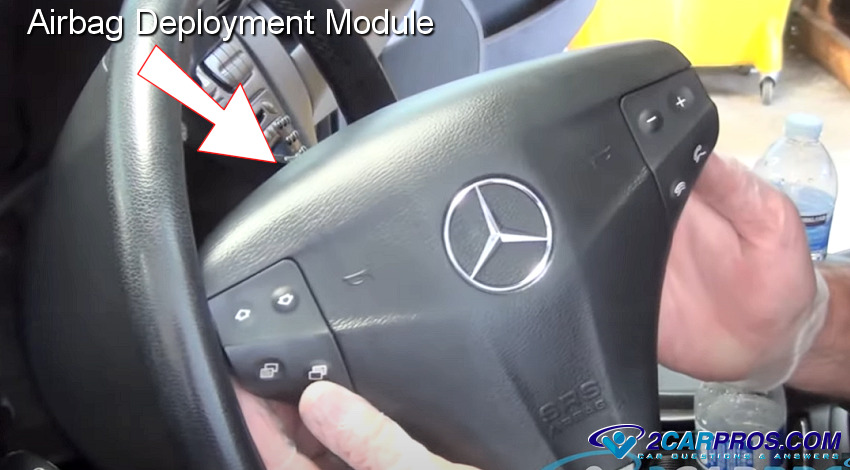If the toe is off on either tire, there will be the wear I described on both tires. Toe wear is always a result of total toe of the two tires, not individual toe on one tire. If toe is off on only one of them, the steering wheel will be off-center when driving straight ahead. Toe can be off equally on both tires in which case the steering wheel will still be straight. Normally misadjusted toe will not cause a pull when you let go of the steeing wheel, but if the two front tires are steering in different directions, the car has to follow one of them. That will be the tire with the most weight on it, and that is usually the right one because roads tilt to the right so rain will run off.
We can narrow this down to something not related to the alignment, tire wear, drive shafts, or even the transmission because the vibration occurs when the car is not moving. That should make it a lot easier to find. Some additional things to look at include the vibration damper on the front of the engine and the possibility of a balance shaft that isn't doing its job.
The harmonic balancer / vibration damper has a heavy metal ring separated from its hub by a thin layer of rubber. Its job is to dampen the twisting action of the crankshaft caused by the pulses of each piston as they apply pressure. Ford has had a lot of problems with that rubber breaking loose and allowing the outer ring to spin on the hub. Some engines are "externally balanced" meaning they couldn't cast all of the counterweights on the crankshaft so one is cast into that outer ring and one is cast into or added onto the flywheel, flexplate, or torque converter. If that ring spins on one of those with the added weight, it will cause a miserable vibration but it usually won't be felt at idle. A clue can be found by shifting to neutral and letting the engine idle while coasting from highway speeds. The vibration will become more severe the faster the engine is going.
The same is true of engines that use a balance shaft except problems with these can usually be felt at idle. These shafts spin in the opposite direction of normal crankshaft rotation and at twice engine speed. They were mostly used on four cylinder engines which naturally vibrate more due to fewer power pulses per crankshaft revolution. Some six cylinder engines use them too. The Chrysler 2.2L, for example, feels like any normal four cylinder engine, but the nearly identical but newer 2.5L uses a balance shaft and runs much smoother. Their balance shaft is run off the timing belt. Some engines use a separate chain to drive their balance shafts. On almost all engines, if the sprocket is mis-timed by just a few teeth, there will be a noticeable abnormal vibration. When it's just a little out of time, the shaft doesn't cancel out the normal engine vibration, but as it gets closer to 180 degrees out of time, its designed-in vibration adds to the engine vibration making it even worse than having no balance shaft at all.
The question is, if the balance shaft is indeed causing the problem, how did it get out of time? It is free to spin and presents very little load on the belt or chain so it rarely gets out of time on its own. Most commonly the problem starts after someone had it apart to replace components.
Since you can feel the vibration when standing still, have a helper pry on the engine to lift, turn, twist, or shove, ... Anything that will repostion something while you watch for a change. You might consider removing the serpentine drive belt from the power steering pump and generator, then running the engine long enough to see if the vibration changes.
Caradiodoc
Thursday, June 10th, 2010 AT 10:16 PM


